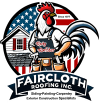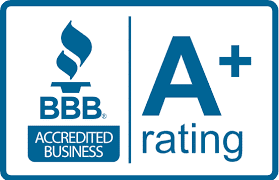
The storm has passed, but your worry hasn’t. You step outside, hoping your home is intact, only to find that everything looks okay. But what about the damage you can’t see? Underneath the shingles or inside the attic, real problems could be hiding. That’s where a roof repair company comes in — not just to patch what’s obvious but to uncover what storms try to leave behind.
Why Hidden Roof Damage is a Big Deal After a Storm
Storm damage doesn’t always announce itself with missing shingles. Some of the most expensive roof issues are the ones that creep in quietly. Rain, hail, and wind can cause serious problems that go unnoticed for weeks. A professional roof repair company knows what to look for and aims to spot these dangers before they become major repair jobs.
Storms Can Cause Invisible Problems
Strong winds can lift shingles just enough to break their seal. Once water gets under those shingles, it spreads fast. Hail may not always crack a shingle, but it can bruise it and weaken its core. Over time, that damage leads to leaks and soft spots. What appears to be a solid roof may already be compromised.
Delaying Repairs Costs More Later
Water always finds a way. Today’s small leak can soak your roof deck, causing mold and rot. The longer the moisture remains, the more damage it causes behind walls and insulation. Homeowners who wait too long often pay more in the long run. Insurance companies may even deny claims if you ignore early signs.
How a Roof Repair Company Starts the Post-Storm Inspection
The inspection process needs to be thorough right after a storm. A qualified roof repair company doesn’t rush this first step. They combine visual checks, homeowner input, and safety checks before climbing the roof. This early phase helps them determine which areas require more in-depth attention. It’s a smart way to avoid missing critical damage.
Initial Walkaround and Visual Scan
Inspectors start by walking around your home. They look for downed branches, dented gutters, and visible shingle damage. Gutters filled with granules are a red flag, indicating that the shingles have taken a beating. They also scan the roof edges for signs of lifting or curling. These signs often indicate wind damage, even if no shingles are missing.
Talking to the Property Owner
Your input can help narrow down the problem areas. Inspectors will ask if you noticed leaks, drafts, or loud impacts during the storm. They may also ask if you’ve had past roof repairs or leaks. Any stained ceilings or wet spots in your attic give valuable clues. The more details you share, the easier it is for them to track the damage.
Tools Roof Repair Companies Use to Find Hidden Damage
Spotting storm damage isn’t just about eyesight. A professional roof repair company brings tools that reveal what’s happening beneath the surface. These tools help detect water, heat differences, and weak points that a flashlight cannot see. Technology allows teams to inspect safely and document everything, helping guide the repair plan.
Moisture Meters Reveal What Eyes Can’t See
Moisture meters measure moisture levels on roof decks and attic beams. They help detect damp areas, even if there is no visible leak. Water trapped under shingles or in insulation shows up in the readings. High levels indicate trouble is spreading within. Moisture detection is often the first warning sign that repairs are needed soon.
Drones Provide Safe Aerial Views
Modern roof repair companies use drones to inspect from above. Drones capture high-resolution images of the entire roof, enabling the detection of dents, tears, and missing shingles on steep or high roofs. Crews can review the footage together to find weak areas. Drones also avoid extra foot traffic that might cause more damage.
Infrared Imaging Detects Heat and Moisture Gaps
Thermal imaging spots are trouble hidden under your roof. Wet areas cool differently from dry ones, so heat patterns expose leaks. Technicians compare images to find places where water might be trapped. This method is fast and accurate. It’s ideal when you’re unsure how deep the damage goes.
What a Roof Repair Company Checks in the Attic
Damage doesn’t stop at the shingles. A roof repair company continuously checks inside, especially the attic. This space often reveals signs you won’t catch outside. Moisture, sagging, and mold in the attic typically indicate that the roof above it is compromised. What happens here can spread through the rest of the home.
Insulation Can Reveal Water Intrusion
Wet insulation loses its ability to trap heat, smells musty, and promotes mold growth. If a storm pushes water into the attic, insulation will show it. Even a small leak can ruin large sections over time. Inspectors check for damp spots and flattened insulation to locate problems.
Rafters and Decking Might Show Subtle Signs
Wood in the attic tells a story. Stains on rafters often originate from roof leaks. Warped boards or sagging panels suggest long-term moisture damage. Nails that have rusted due to moisture are another warning sign. These indicators help roofers pinpoint where water enters the structure.
How a Roof Repair Company Spots Hidden Structural Damage
Not all roof damage requires a total replacement, but knowing which problems are serious takes experience. A roof repair company knows the difference between what’s cosmetic and what’s critical. They can distinguish between a few missing shingles and a weakened roof system. That clarity saves you money and worries.
Shingle Loss Isn’t Always the Worst Part
A missing shingle is obvious but not always urgent. The real danger lies beneath the shingles that appear fine. Hail bruises can soften the shingle base, leading to leaks later. A cracked seal may allow water to seep in during the next rain. Professionals know how to test for hidden weak spots.
Flashing and Sealant Failures Are Often Missed
Flashing protects seams and vents, but storms can lift or crack them. Once it shifts, water seeps in through the smallest gaps. Sealants around chimneys and skylights also take a hit from hail and UV rays. These minor points of failure often go unnoticed by the untrained eye. Repair crews inspect every joint and edge for breaches.
Why Roof Repair Companies Document Every Finding
Documentation isn’t just helpful — it protects you. A roof repair company will document photos, moisture readings, and notes on the damage. This process backs your claim with your insurance provider. It also keeps the contractor accountable for quality. Having proof matters when money and safety are involved.
Evidence Helps With Insurance Claims
Insurance companies want clear, dated records. Roofers use photos and readings to build a timeline of damage. This proof shows that the issues came from the storm, not wear and tear. It also speeds up your claim and limits pushback. Without documentation, your payout could be delayed or denied.
Records Build Trust With Homeowners
Transparency matters. When a company shows you photos, scans, and measurements, it builds trust. You see what they see, which makes the next steps easier to understand. It also helps you feel more confident when repairs are recommended. Good documentation proves that no one’s guessing.
How Roof Repair Companies Decide What Needs Immediate Fixing
Not every storm issue is urgent, but some are. A skilled roof repair company knows how to prioritize tasks effectively. They focus first on what threatens your safety and the value of your home. Then, they examine the damage that might worsen rapidly. The goal is to prevent major problems from arising from minor issues.
Safety Hazards Come First
Loose shingles can blow off and cause injury to someone. Leaks near electric panels or HVAC systems pose serious risks. If water is entering quickly, that section gets fixed first. Sometimes, quick patching is needed before complete repairs. Safety calls come before anything cosmetic.
Prioritize Based on Long-Term Risk
Once immediate hazards are handled, the team checks for high-risk zones. These include valleys, chimney bases, and places with soft decking. Repairs focus on preventing moisture from entering in the long term. Addressing these issues early on saves future costs. Roofers often recommend reinforcement where damage is likely to recur.
Roof Repair Company Services Go Beyond Surface Fixes
A professional roof repair company won’t stop at patch jobs. They want your roof to survive the next storm, too. That involves reinforcing weak areas, upgrading materials, and providing guidance. Their job goes beyond fixing — they prevent future problems. It’s about smart protection for your home.
Structural Reinforcement When Needed
Sometimes, the wood under your roof is no longer stable. Crews can replace rotten decking or strengthen sagging beams. They also tighten joints and replace aged underlayment. These reinforcements help the entire roof perform more effectively. It’s not just about patching — it’s about building it right.
Preventive Maintenance Advice
The best companies don’t disappear after the fix. They give tips on how to reduce future damage, such as sealing vulnerable areas or cleaning clogged gutters. They’ll also recommend materials that are more resilient to local weather conditions. Smart maintenance can double your roof’s lifespan.
What to Expect When Hiring a Roof Repair Company After a Storm
You need help fast but don’t want to rush a decision. A good roof repair company gives clear answers and upfront details. They arrive with experience and leave your property clean and tidy. You should feel respected and informed throughout the entire process. That’s how a real pro earns your trust.
Clear Communication and Detailed Estimates
Expect a full breakdown of what’s needed and why. A written estimate will list labor, parts, and the time it takes. You’ll also get answers about your insurance claim process. Teams should explain what they’re doing as they go—no guesswork, no surprises.
Professionalism and Licensed Work
The crew should be licensed, insured, and trained. The company’s work must meet local codes and roofing standards. Warranties should be offered on both labor and materials. You’ll also notice that cleanup is done right after the job. It’s about fixing a roof and how they treat your home.
Get Ahead of Storm Issues With a Roof Repair Company
Your roof won’t send you an alert when it’s in trouble. It won’t flash warnings or leak right away. But storms don’t leave without leaving a mark — and waiting for obvious signs usually means it’s already too late. Trust that instinct if you’re second-guessing what the last storm left behind.
Calling a roof repair company now isn’t just smart — it’s the move that protects everything under your roof, including your peace of mind.
For more ways to keep your roof strong and storm-ready, head to the Faircloth Roofing, Inc. blog — your go-to resource for expert roofing guidance.






